You are dealing with the tough winter and constant heavy snowfall. You toy with the idea to use a snow blower to clean up your yard instead of a shovel as snow blowers have proven massively effective, but the question is exactly how much snow to use snowblower?
It all depends on the amount of snow on your property.
We will shed light on when how much snow can snow blowers handle. According to the depths of the snow, which snowblower should you use, what should you keep in mind when planning your snow clearing, and the different types of snowblowers in the market.
Come! Let us break down how to effectively tackle snow during winter!
Contents
How Much Snow To Use Snowblower Do You Need
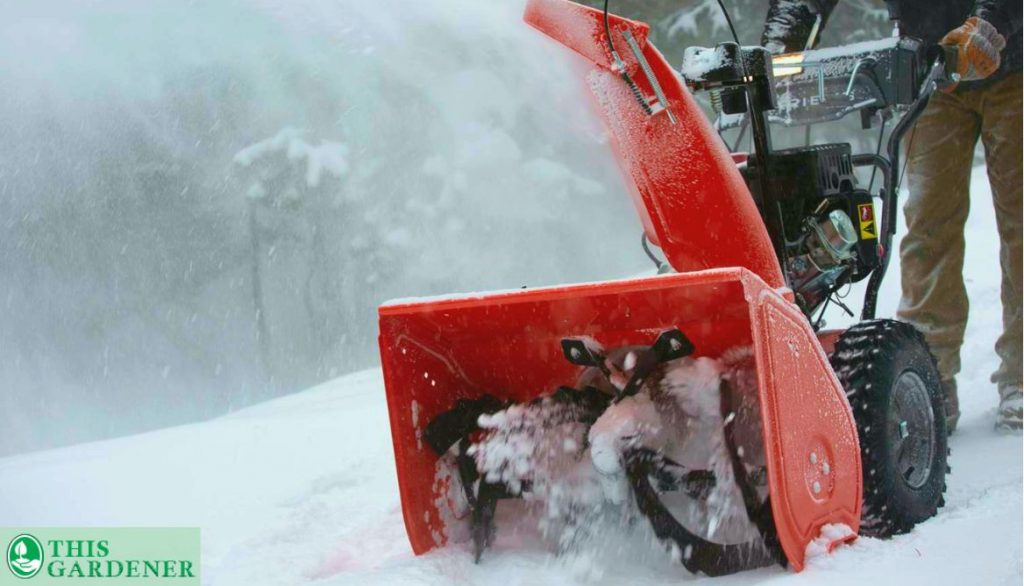
If it is the peak time of winter season, and it is impossible to shovel all the snow. Then you must be well-informed on much snow is needed for a snowblower to work its best.
Snowblowers cut down your snow removal time to less than half. They easily assists you in removing large quantities of snow with ease.
If the level of snow is up to 3 inches deep then you know that conventional means such as shovel will not do the trick. It can handle up to 6-9 inches of snow easily. Also, it can work for an extended duration to remove all the snow.
How To Plan Out Your Snow Clearing
The snow is wet and heavy which your shovel can’t alone handle. Whether to plow or not to plow is the question. Clearing snow could be a hassle especially not knowing where to start and what tools to use. Let us offer you some tested tips, some key points to keep in mind, and handy tools.
How Much Snow is Needed for a Snow Blower
Every year a lot of property owners face the same problem during winter … Snow! And if you own a commercial property then shoveling off such a large amount of snow is an impossible task. Any snowfall above 6 inches requires a heavy-duty snowblower.
Hence we researched and found you the perfect equipment.
Honda HSS928AAT | Troy-Bilt Squall 208XP | Snapper XD 82-Volt MAX | |
Photo: | |||
Description: | Very powerful, quiet while working, high- quality build, used to remove a large amount of snow. | Lightweight and powerful machine that can be easily handled and is suitable for an average amount of snow. | Lightweight, cordless, battery-powered, quiet machine, has efficient battery time and can get rid of snow from 3″ to 6″ with ease. |
Weight: | 234 lbs | 103 lbs | 19.7 lbs |
Clearing Width: | 28″ | 21″ | Up to 4″ |
Clearing Depth: | 21″ | 6″ | 12″ |
Start Type: | Manual | Push-button | Push-button |
Rating: | |||
Available: |
Difference between Wet Snow and Dry Snow
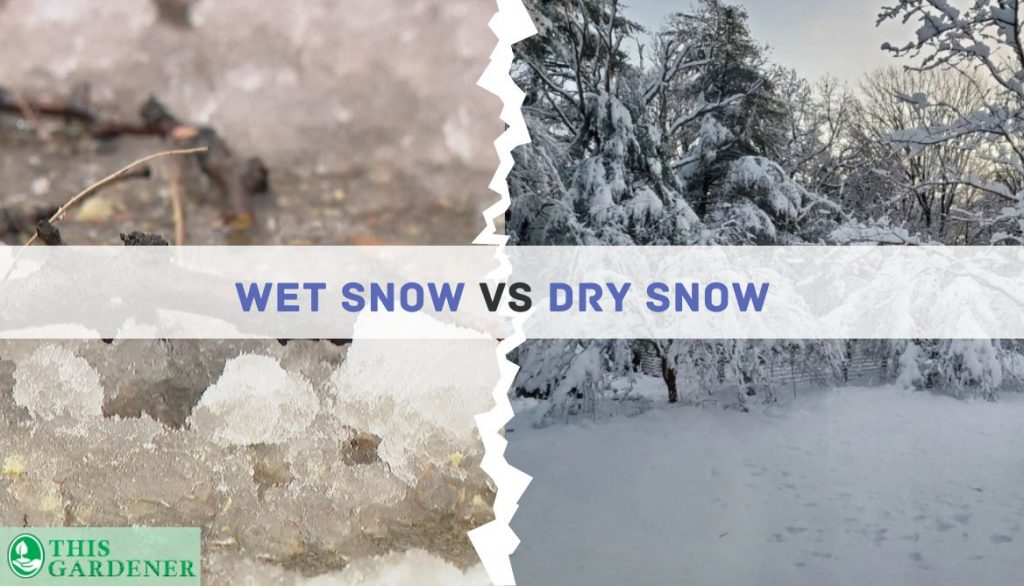
Wet snow as the same suggests is watery and could be molded by hands. The softness and wetness make it difficult to work with because there are risks that one might slip and hurt themselves.
It also has more weight than dry snow would have so the snowblower will have to use more power to scoop it. Use a snowblower that is heavy duty and preferably at least two stages to clear it.
Dry snow is powdery, loose, and light. Snowblower easily scoops and shoots it away via the chute at a far distance because of its fluffy and grainy texture. You can use a snowblower that is single-stage to cleat it.
Blow in the Direction of the Wind
It is recommended to use the wind to your advantage when clearing the snow away from your paths. Check for wind direction using either a wind sock, throwing a chunk of snow in the air, or simply observing where the blizzard is blowing the snow away.
Once determined, aim your chute in its direction and start to plow. Wind will end up helping it throw to a longer distance.
Throw Snow Farthest Possible
To make sure snow is thrown at a long distance away from your path you put your snow blower at the highest speed and should aim the chute at a rough 45° angle. The direction of snow blowing should match with wind direction.
Also, move the machine steadily and without haste to make sure it collects a good amount of snow but not an excessive amount of snow. Make sure to attack the pile one by one and not all in one go.
Choose Where You Want To Pile The Snow
Planning first where we should be piling the snow is important. We have to note our convenience and of our neighbors. According to your property plan which side of the driveway to blow?
Think about that when the temperatures will drop causing the snow to melt how will drain the water away? Do not blow it toward the road, in your neighbor’s yard, or on their car.
Take Smaller Bites Of Snow
To avoid the risk of clogging the chute go over the snow slowly and steadily. Cover small chunks bit by bit.
This is recommended for your safety as well as your snowblower as wet and slippery snow can cause you to trip while an excessive amount of snow can exhaust your snowblower reducing its life.
Prep The Driveway For Snow Clearing
Preparing the driveway means that you would need to clean anything that can potentially be sucked into the blower, jam it from the inside and damage it.
While the blowers can be run on gravel surfaces when properly propped up with skid shoes it is important to remove hard solids such as a rock, newspapers, gardening tools, lawn props, and decorations placed on the floor.
Don’t Wait For It To Stop Snowing
It is better to start clearing the snow before it gets deep. If the depth increases and snow piles up above 12 inches, the snow blower will exhaust more. If the snow is plowed before it reaches 12 inches of depth you can use a single-stage unit to remove the snow.
Types of Snow Blowers
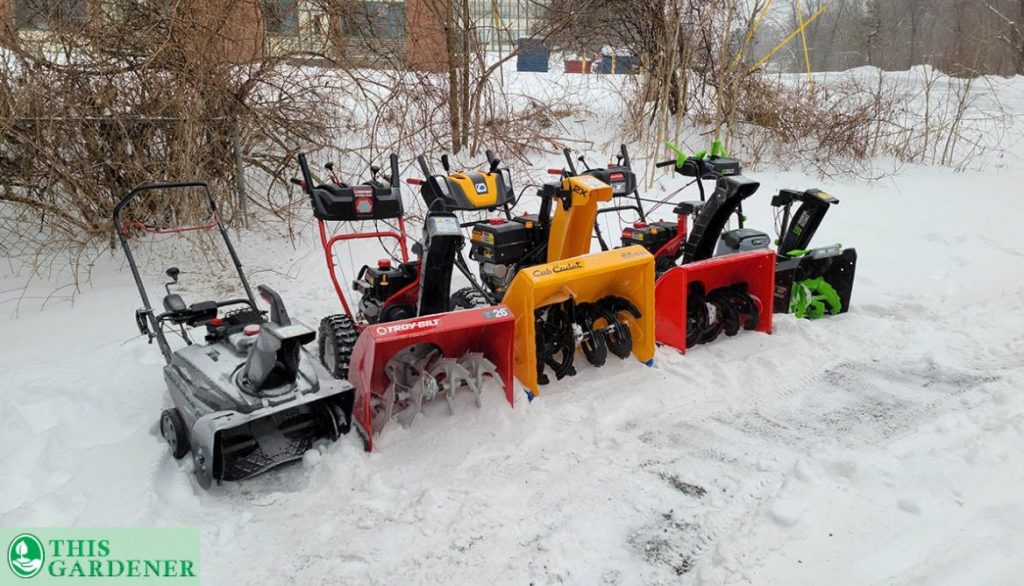
Choosing the right snow blower could be a head-scratcher for one. Browsing the e-stores, scanning the pictures, and reading the list of basic features, one is confused that what are single-stage snow blowers. How are they different from the two-stage snow blowers and three-stage snow blowers?
Are electric snow blowers better or would a Gas-powered snow blower suit my sidewalks more? Do I even need a snow blower? or would a leaf blower with a shovel do the task just fine?
Let’s detangle this together and go in-depth to see what will make the best snow blower for you. If you get less than 2 inches of snow then a snowblower might not be a necessity but if it is anywhere above 3 to 4 inches of snow it is time to fire up a blower!
When opting to buy a snowblower always consider how much snow falls in your district. The depth and amount of snow will determine which blower you should purchase.
Single Stage Snow Blowers
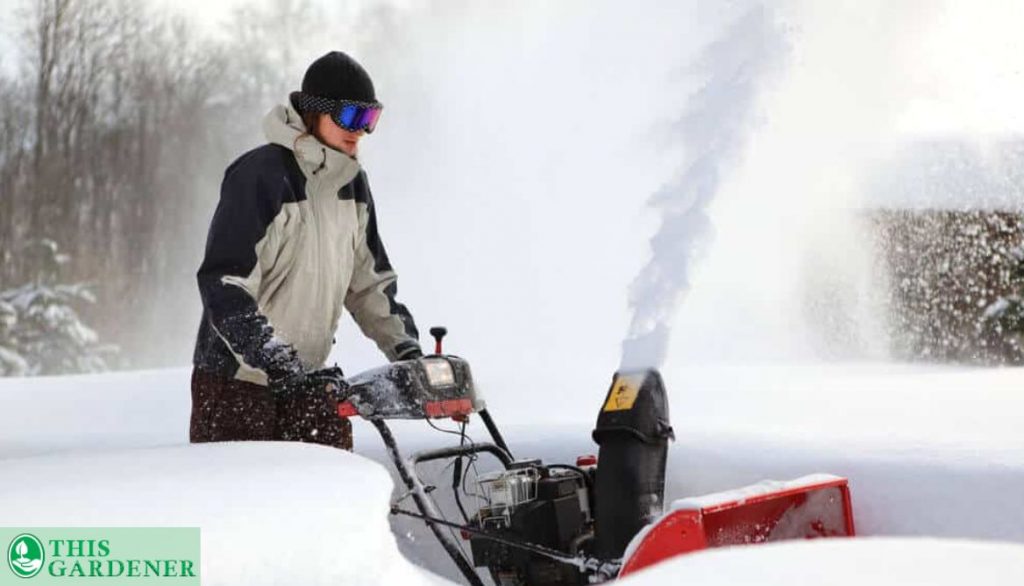
For areas that have moderate snowfall, one should go for a single-stage snowblower. A single-stage snowblower can take on from 8-inches of snow to 12-inches of snow.
People residing in the suburbs with moderate snowfall prefer single-stage snow blower because of their light-weightedness, smaller size, and easy upkeep ranking them high in the efficient snow blowers list for a flat surface.
The compactness makes it user-friendly and snow-blowing handy. A single-stage blower can be used for sidewalks, porches, small driveways, etc.
Two Stage Snow Blowers
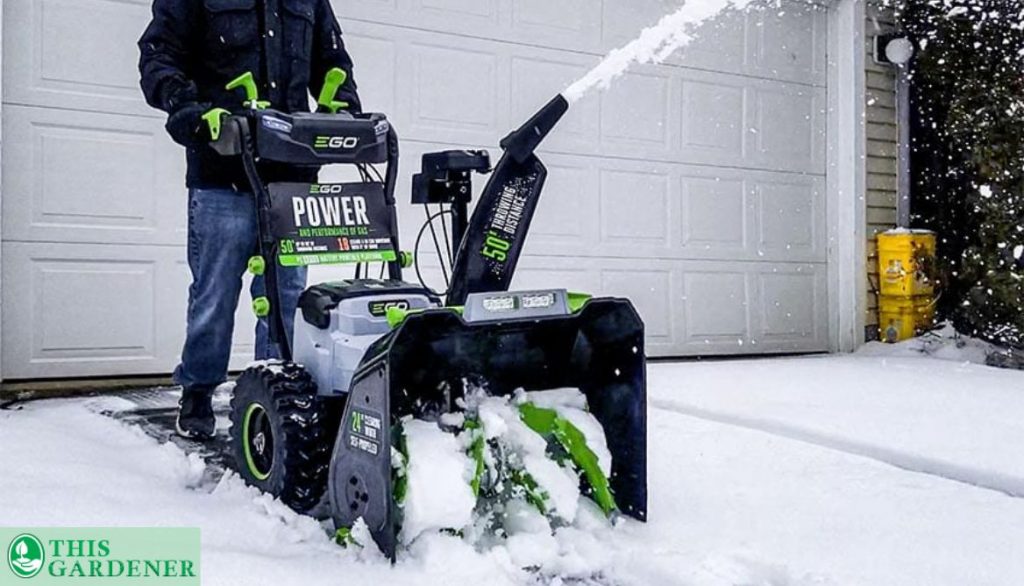
If you reside in an area that expects deep and heavy snowthat is above 12 inches it is suggested that single-stage snow blowers should be upgraded to two-stage snow blowers.
The two-stage units can be used for 12 to 16 inches of deep snow. These units consist of a slow-turning impeller that collects the snow and pushes towards the high-speed impeller attached inside that further pushes the snow towards the discharge chute, and out with a throw of up to 50 feet.
In comparison, two-stage blowers have an advantage over single-stage blowers because of their much sturdier and heavier bodies. Most two-stage units have programmed features and options and can be used on concrete or even gravel surfaces.
The two-stage blower comes with a bulkier engine and bigger, taller buckets so even pile-ups are cleared with it. Two-stage units with wider bodies chew up hardened ice and work on rockier paths without doing any damage to the surfaces.
Two-stage snowblowers often are equipped with push start buttons, skid shoes, levers, and power-controlled wheels so although it is not as light weighted as single-stage snowblowers the handling becomes much easier.
Three-Stage Snow Blowers
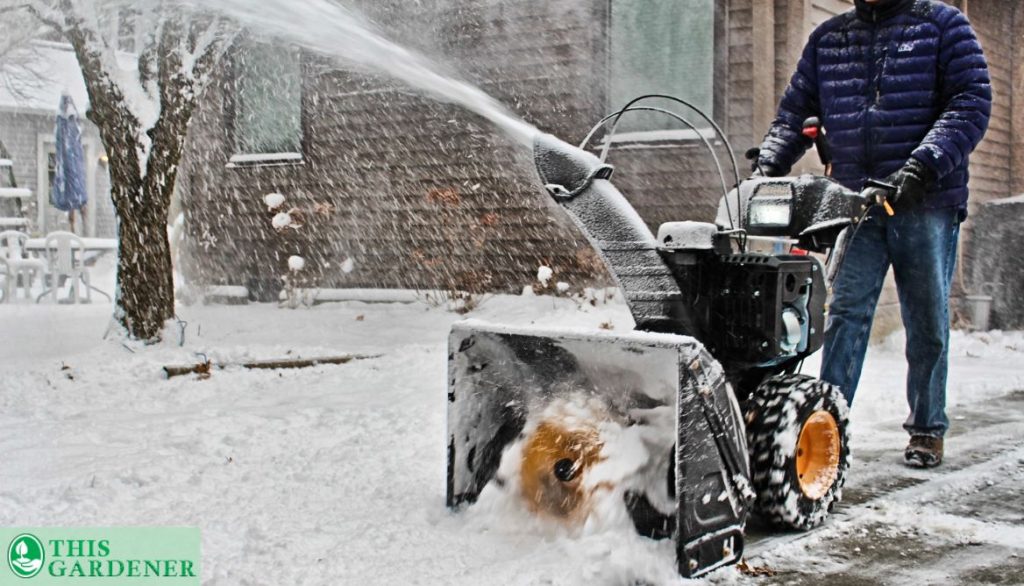
Now, what makes three-stage snowblowers different from their counterparts? The two-stage blowers and single-stageblowers are excellent for clearing snow. However, many go for a three-stage snowblower for its snow-blowing range as well as its super fast speed, its ability to work on towered piles, and large gravel driveways, breaking down frozen ice, and handling snow up to 20 inches deep.
The machine can be the same size as a two-stage blower but with a metallic impeller. The impeller picks up the ice from the tracks and shoves it to the center of the machine where an accelerator catches it.
That accelerator chops it and pushes the snow through the chute at a large trajectory with high speed. This powerful feature comes in handy with dense and heavy snow.
Electric Snow Blowers
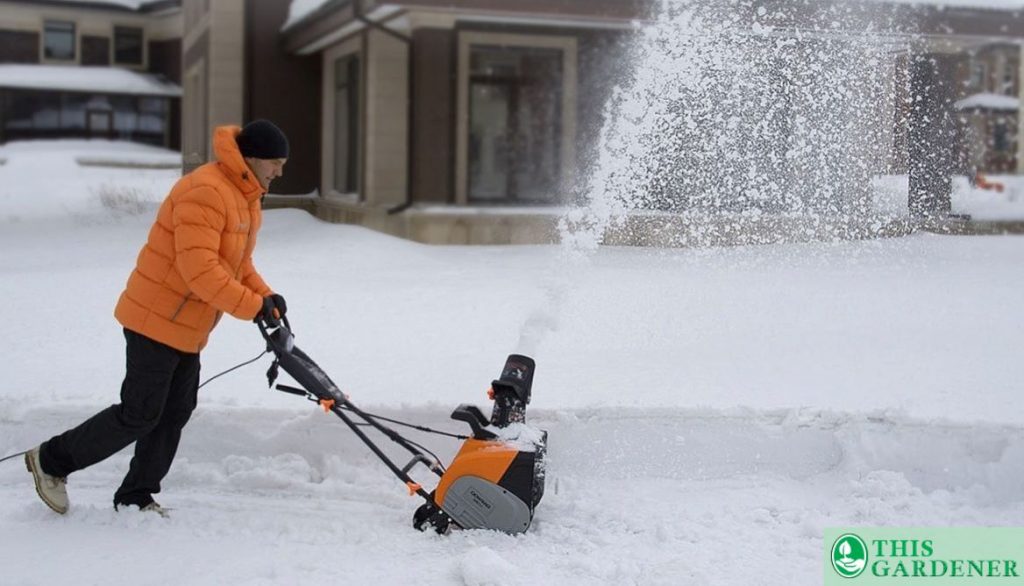
Electric snow blowers are easier to operate, maintain, and store because of their small sizes. They are also eco-friendly and a lot more portable than gas-powered snow blowers. They are favorites for people looking to clear up tight spaces, and front porches, clean up their decks, stairs, etc.
Electric snow blowers can be battery powered giving you freedom of mobility or they can be powered by a cord that only needs an electrical outlet and generally requires an extension cord to cover the entire space.
Gas-Powered Snowblowers

Snowblowers that run on gas are made for larger spaces with deeper and denser snow. Their larger and stronger-built makes it a go-to choice for people dealing with consistent and massive snowfall. It is also a great investment for covering more ground and volume.
FAQ
Can snow be too deep for a snow blower?
Yes. One should use a gauge, scale, or measurement reference to judge the depth of the snow and use a snowblower accordingly. Single-stage units should not be used on snow that is more than 10-12 inches deep.
However, manufacturers are offering three-stage units that can handle up to 20 inches of snow which is a significant amount.
When should I use my snowblower?
A snow blower should be used when the snowfall’s depth is between 2 to 6 inches.
How early can I run my snowblower?
Snow height has to be 2 inches minimum. For less than 2 inches, a snowplow shovel is recommended.
What can you not do with a snowblower?
A single-stage snowblower lacks the ability to crush dense ice, or rocks, or clean up a large quantity of snow. It can only be used on concrete surfaces so it is not advised to use it on uneven gravel surfaces.
Can a snowblower be left outside in winter?
A snow blower can be left outside in winter but it needs to be elevated from the ground, on a platform.
It should be covered completely with a tarp cloth or a custom cover made for the model and even better if you can store the snow blower under a shed.
Do snow blowers remove all snow?
Size and the ability to remove the amount of snow varies in Snowblowers. Two and three-stage units handle large amounts of it.
It is possible that plowing it once will not remove all snow if the build-up has deepened but running it again a few times will clear it all the way to the ground.
Do you need to warm up a snowblower?
Yes. Ideally, you should warm up a snowblower before putting it into action.
Can you use a snow blower for 3 inches?
If the depth of snow is larger than 2 inches a snow blower will be an excellent tool to clear the driveways.
Why doesn’t my snowblower throw snow as far as it used to?
If your snow blower does not work as well as before, check its chute, the auger housing for clogging, and the augers belt for its wear and tear.
Conclusion
Now you know when and how to make use of a snowblower along with which type is the one you should invest in. We hope we answered your queries, simplified and improved your snow-blowing plans, and put an end to the head-scratching.
What are some of your tips and hacks that one could use? Tell us in the comments!
- How to Get Potatoes to Sprout Eyes: Detailed Growing Guide with 3 Options - July 31, 2023
- Weight of a Medium Potato: Revealed in Detailed Guide - July 29, 2023
- Maris Piper Potatoes: 9 Substitutes You Should Know About - July 27, 2023
Hello! I’m Jessica Zander, a garden coach and consultant based in the Boston area (zone 6b), offering virtual consultations across the country and Canada.
I’ve been passionate about gardening since the early 1990s, and in 2022, I launched You Can Do It Gardening to empower individuals to feel more confident in their gardening endeavors.
Following a 30-year career in nonprofit finance and operations, I transitioned out of that field in mid-June of 2023 due to the growing demand for coaching services. Interestingly, my years of presenting financial statements to boards and finance committees proved to be valuable experience for teaching people about gardening! I enjoy sharing skills, providing guidance and suggestions, and collaborating efficiently with clients to make significant improvements to their outdoor spaces, both small and large. I also regularly teach at the Arlington Continuing Education and Cambridge Adult Education.
My approach is direct and practical, akin to Mary Poppins, but tailored to your garden. Clients find satisfaction in saving money and taking pride in their own gardening achievements.

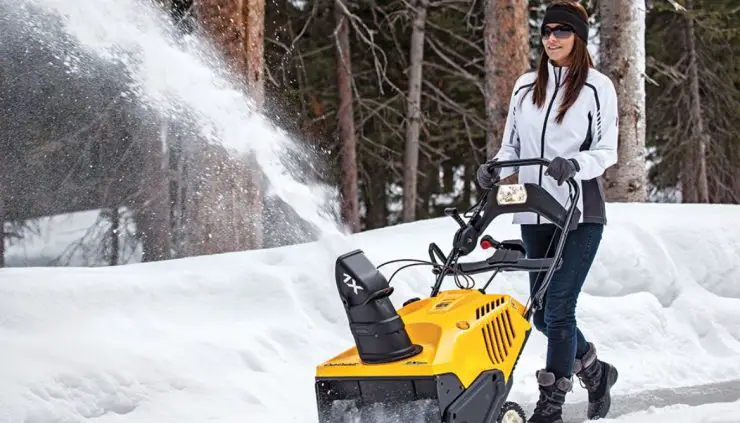



Add comment